
 |
Home | Contact |
Links To Photos

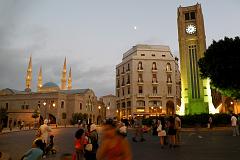
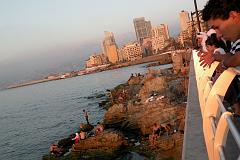
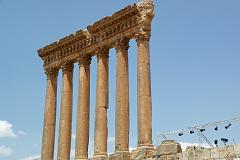


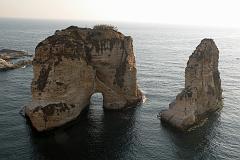
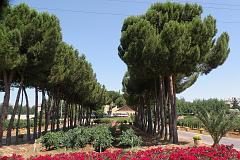
Updated: April 2012. Click on an image to see the FULL size with a caption.
Lonely Planet: Coolly combining the ancient with the ultramodern, Lebanon is one of the most captivating countries in the Middle East. ... With all of the Middle East's best bits - warm and welcoming people, mind-blowing history and considerable culture, Lebanon is also the antithesis of many people's imaginings of the Middle East: mostly mountainous with skiing to boot, it's also laid-back, liberal and fun. While Beirut is fast becoming the region's party place, Lebanon is working hard to recapture its crown as the 'Paris of the Orient'.
The star attraction in Lebanon is Beirut (French: Beyrouth), the capital and largest city of Lebanon. The city is the country's main and largest seaport, located on a peninsula in the middle of Lebanon's Mediterranean coastline. The city was first mentioned in the ancient Egyptian tablets dating from the 14th century BC, and has been continuously inhabited ever since. Beirut is the seat of Lebanonís government and the most important centre of economy with numerous corporate companies and banks. The city is the focal point of the region's cultural life, renowned for its media, theatres, cultural activities, and nightlife. The city had suffered great damage during the destructive civil war, but it underwent major reconstruction after the war. The historic city centre was reconstructed, entertainment events have returned to the city, once renowned for its night life. The city keeps attracting crowds of tourists once more. Beirut was listed as one of the ten liveliest cities in the world by Lonely Planet in 2009.
I started my walking tour of Beirut at Place des Martyrs, the location of the largest ever Lebanese public gathering, the March 14, 2005 demonstration held on the one-month anniversary of the murder of Prime Minister Rafik Hariri, which brought 1 million Lebanese - a quarter of the country's population - to the streets, resulting in the final withdrawal of Syrian troops from Lebanon. Also in Place des Martyrs is the impressive Mohammed al-Amin Mosque, which looks like a younger sibling of Istanbul's Blue Mosque, in which former prime minister Rafiq Hariri is buried. I then visited St George's Cathedral, a Maronite church dating back to the Crusades, the Roman Ruins, Grand Serail, the Roman baths, the Al Omari Mosque, St George's Orthodox Church, and on to the Nejmeh Square. There were many people strolling around the Place d'Etoile with its clocktower, to stroll, eat and shop.
I walked from Beirut downtown to the Corniche, passing the bombed out shell of the former Holiday Inn, a reminder of the civil war that engulfed Lebanon. Next is an obelisk and statue of Hariri, where on February 14, 2005 Lebanon's former Prime Minister Rafik al-Hariri was killed when a bomb exploded on his motorcade. At the eastern end of the Corniche are the new Marina Tower and Four Seasons Hotel. I walked along the Corniche from its start at St George Yacht Club to Pigeon Rocks to the west and south. The corniche is a favourite place to stroll for families and couples, stopping to greet friends or to have a coffee along the route. I watched people pole fishing from the Corniche and people smoking a hookah pipe with their friends.
My day tour to the Bekaa Valley starts with some delightful Lebanese wine tasting at Ksara winery. The drive continues through the Bekaa plain to Baalbek, one of the most important Roman site in the Middle East. The tour completes with a visit to Anjar, the unique fortified city in Lebanon built as early as the 8th century by the Ummeyad Caliph of Damascus.
Just before dinner, we drive up to Harissa to see the 15 ton statue of the Virgin Mary, known as Our Lady of Lebanon, which towers over the Bay of Jounieh. We descend and drive to Byblos for dinner, passing the picturesque ancient fishing harbour and Roman remains, Crusader castle and beautifully restored souq.